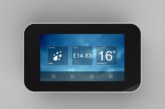The Office for Product Safety & Standards, which is responsible for enforcing the Heat Network (Metering and Billing) Regulations (HNMBR), has announced updates to the legislation that applies to all district and community heat schemes in the UK.
Speaking at a recent heat network compliance seminar, hosted by Switch2 Energy and Winckworth Sherwood, Enforcement Manager, Mili Malic, explained the latest regulatory changes. Mili also announced the next phase of heat network regulations consultation, which is now open and will close on 12th December 2019.
Mili Malic briefed delegates on changes to the Duty of Notification process. This obligation affects all heat suppliers, who must inform the regulator about their heat network scheme every four years.
One of the key changes is a revision to the notification template that captures information about the location of any district heat network or communal heating scheme — as well as its capacity and supply figures. Each building forming part of the network has to be identified, along with the number of customers using it and how they receive information from billing partners.
The Heat Network Regulations were first introduced in 2015, so 2019 marks the four-year compliance anniversary for thousands of heat network suppliers, who will now be required to re-notify the regulator using the revised template.
The current Heat Network Regulations consultation includes proposals for a new cost-effectiveness tool to assess the viability of retrofitting final customer meters to existing non-metered buildings. This requirement had been delayed due to the challenge of constructing a robust feasibility tool. The consultation includes proposals to extend the scope of current heat metering requirements, with the aim of making further improvements to accuracy, maintenance and billing.

Commenting on the announcement, Ian Allan, Head of Market Strategy for Switch2, said: “We welcome the consultation and are pleased to see that the regulator is making progress towards rolling out the methodology for assessing the viability of fitting heat meters within individual dwellings. Modern smart meters are crucial in ensuring fair and transparent billing and providing the information customers need to budget and save energy. This real-time data also informs overall heat network efficiency that can generate major performance improvements.
“When we introduce smart metering to heat networks that have previously used flat rate billing, we regularly see energy costs fall by around 40%. By gaining visibility of precisely how much energy they are using and how much it is costing them, customers tend to reduce their consumption, which benefits both their finances and the environment. This behavioural change, however, is reliant on the availability of responsive heating controls, which often require improvement.”
Currently, the Heat Network Billing and Metering Regulations make it mandatory to fit final customer meters and point of entry meters in new-build heat network developments and most major refurbishment projects. In addition, customers must be billed using actual meter readings, rather than estimates, and billing information must be transparent and informative.
Download Switch2 Energy’s free guide to The Heat Network Billing and Metering Regulations.









